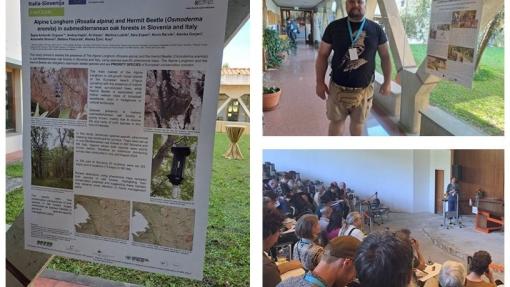In May 2025, the partners of the E-Nat2Care project participated in the 12th European Symposium on Saproxylic Ecology (ESSE), held in Florence, Italy. This is the leading European scientific event dedicated to the exchange of knowledge and experience in the field of saproxylic organisms, species that depend on deadwood during their life cycle. Since 1999, the symposium has brought together researchers, conservationists, and forest managers from across Europe.
We contributed to the symposium with four presentations, three posters and one oral presentation, highlighting key findings from the project. We placed particular emphasis on the innovative use of species-specific pheromones combined with live traps equipped with camera systems, enabling non-invasive and effective monitoring of rare saproxylic species. We presented the results of the first systematic survey of the alpine longhorn beetle (Rosalia alpina) and the hermit beetle (Osmoderma eremita) in the cross-border area of lowland sub-Mediterranean oak forests in Slovenia and Italy. This habitat type has so far been largely overlooked in saproxylic species monitoring, making the new data especially valuable. The results suggest that sub-Mediterranean oak forests may offer significant conservation potential for the long-term survival of these two protected species. We also conducted pheromone-based systematic surveys in alpine areas, where we recorded the first confirmed presence of hermit beetle in the Prealpi Giulie Natural Park. The data collected significantly enrich existing knowledge of the distribution of these rare and protected species. In addition, we demonstrated how artificial habitats can effectively replace lost natural microhabitats, such as old hollow trees needed for beetle development. These substitute habitats proved to be a useful tool both for improving living conditions and for targeted species monitoring.
Participating in the symposium enabled valuable knowledge exchange with international colleagues and strengthened cross-border cooperation. Our contributions underscore the importance of innovative yet nature-friendly approaches to the effective conservation of forest biodiversity.

